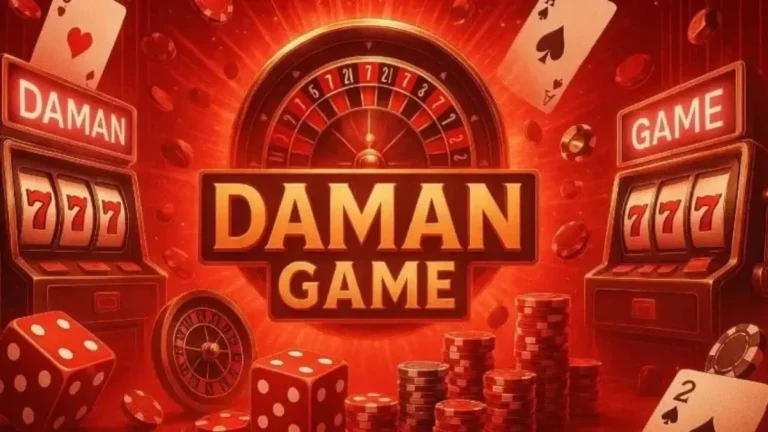The Daman Game: Tradition, Tactics, and Timeless Appeal
In a world dominated by fast-paced video games and digital distractions, traditional games continue to captivate hearts in various parts of the world. One such game that has stood the test of time is the Daman Game, also known as Goti Game, Marbles, or Kancha in different regions. This simple yet engaging game has been played for generations across South Asia and has become an emblem of childhood nostalgia, neighborhood camaraderie, and sharp-eyed strategy.
Origins and Cultural Relevance
The Daman Game although seemingly simple, carries with it a rich cultural heritage. Its origins are hard to trace precisely, but it has been part of traditional South Asian and Southeast Asian communities for centuries. Known by different names in India, Pakistan, Nepal, Bangladesh, and Sri Lanka, the game has variations in rules, styles, and local customs. What unites all these forms is the underlying essence: skill, precision, and fun.
Traditionally, the game was played in dusty fields, street corners, or schoolyards using small glass or clay balls known as damans, gotis, or kanchas. It wasn’t just a pastime—it was a rite of passage for children, a way to form social bonds, and often a means of learning sportsmanship, strategy, and healthy competition.
Equipment and Setup
The game requires minimal equipment:
- Daman/Marbles: Typically made of glass or clay, about 1–2 cm in diameter. Players often have a personal collection, each marble with its own design and sentimental value.
- Play Area: A soft patch of dirt or ground where a small circular pit or boundary is drawn. In urban settings, this is often adapted to concrete floors or playgrounds.
- Players: Usually 2 or more, but the game can accommodate larger groups depending on the version being played.
Basic Rules and How It’s Played
Though rules vary by region and tradition, a common version of the Daman Game is played as follows:
- Drawing the Circle: A small circle is drawn on the ground. Each player puts one or more of their damans into the circle as stakes.
- Taking Turns: Players take turns shooting their daman (usually held between the fingers and flicked with the thumb) from outside the circle to knock out other damans while trying to keep their own inside the circle.
- Scoring and Winning: If a player knocks a daman out of the circle, they get to keep it or score a point, depending on the agreed rules. The game continues until all damans are knocked out or players decide to stop.
Some variations include target shooting, where players aim for a single marble placed at a distance, or race-to-pocket, where damans must be hit and moved toward a target area.
Variations and Regional Styles
Each region puts its own twist on the game:
- Kancha (India/Nepal): Played with larger marbles, where hitting the opponent’s marble wins the round.
- Guli (Sri Lanka): A version that combines elements of pool and strategy, where players use angles to hit marbles into holes.
- Taws (UK-based communities): A British version, where collecting and trading marbles was also a major part of the culture.
- Bead-style Daman: In some regions, colorful beads or specialized glass damans are used, making the game more collectible and artistic.
Skills and Strategy
Despite its simplicity, the Daman Game is deeply strategic. Success depends on:
- Hand-eye coordination: Accurate flicking is key to hitting target damans.
- Geometry and angles: Players often use intuition about angles and rebounds, not unlike billiards.
- Risk assessment: Deciding whether to aim for an easy shot or go for a bigger reward with a riskier move.
- Memory and spatial awareness: Players track the position of multiple damans and plan several moves ahead.
Over time, children who played Daman regularly developed enhanced focus, dexterity, and spatial reasoning—skills that could help in academics, especially in mathematics and physics.
Social and Psychological Benefits
Beyond the physical and mental skills, Daman fosters several soft skills:
- Teamwork and Communication: Players often form teams or negotiate trades and outcomes.
- Fair Play and Ethics: The game promotes respect for rules and other players.
- Confidence and Resilience: Losing one’s favorite daman could be tough, but it teaches children to deal with setbacks.
It also strengthens community bonds, as kids from diverse backgrounds play together regardless of socioeconomic status. In many cases, the Daman Game was one of the few entertainment options accessible to all children, rich or poor.
Evolution in the Modern Era
With the rise of video games and smartphones, traditional games like Daman have seen a decline in urban settings. However, in rural areas and during festivals, they continue to thrive. Efforts are being made to revive and preserve such cultural pastimes.
- Schools and NGOs now incorporate traditional games into sports programs to teach heritage and social skills.
- Online videos and apps have been developed to teach children how to play Daman virtually.
- Local tournaments and cultural fairs often include Daman competitions, bringing nostalgia and community engagement into one event.
In recent years, influencers and educators have highlighted the importance of unplugged, physical games in improving childhood development. Some even argue for a balance between digital entertainment and traditional play for holistic growth.
Environmental and Economic Sustainability
One of the game’s advantages is its low environmental impact. The marbles are reusable, and there’s virtually no need for plastic or electronic waste. In an era of eco-consciousness, promoting such games aligns well with sustainability values.
Moreover, artisans in parts of India and Pakistan still produce handcrafted marbles. Encouraging the Daman Game supports local craftsmanship and can provide a source of income for small-scale industries.
Preserving the Daman Legacy
To ensure the survival of this treasured game, efforts need to be both grassroots and institutional:
- Schools can include it in physical education.
- Parents and elders can teach it as a bonding activity.
- Media can showcase stories, documentaries, or short films celebrating traditional games.
- Toy manufacturers can produce eco-friendly damans and sets.
- Local governments can fund traditional sports festivals that include Daman among other games.
Conclusion
The Daman Game is more than a pastime—it’s a cultural artifact, a learning tool, and a source of joy. In a rapidly digitizing world, it stands as a reminder of the simple, tactile pleasures of life. Its timeless appeal lies in the fact that anyone, anywhere, with just a few marbles and a patch of ground, can play, learn, and connect.
By promoting and preserving games like Daman, we not only honor our heritage but also offer new generations a chance to experience creativity, camaraderie, and skill in their purest forms.
Read more: Mushroom Chocolate & Miles: Elevate Your Journey One Square At A Time » Dunkin Donuts
How Payroll Software Empowers Small Businesses to Thrive‘
Let the Light In: The Significance of Windows in Home Design






![Choosing Online Slot Sites 2024 [Best Selection Tips]](https://dunkin-donut.net/wp-content/uploads/2025/11/Choosing-Online-Slot-Sites-2024-Best-Selection-Tips-768x459.webp)